Search
Summary
Loading AI-generated summary based on World History Encyclopedia articles ...
Answers are generated by Perplexity AI drawing on articles from World History Encyclopedia. Please remember that artificial intelligence can make mistakes. For more detailed information, please read the source articles
Search Results
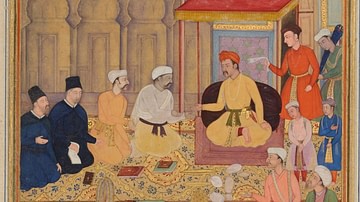
Definition
Ibadat Khana
The House of Worship or the Ibadat Khana was established by Mughal Emperor Akbar (1542-1605 CE) for conducting religious debates and discussions among theologians and professors of different religions. Abu'l-Fath Jalal-ud-din Muhammad Akbar...
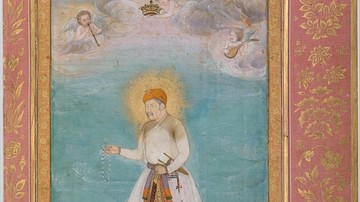
Image
Akbar with a Lion and a Calf
"Akbar With Lion and Calf", Folio from the Shah Jahan Album Painting by Govardhan Calligrapher Mir 'Ali Haravi verso: ca. 1630; recto: ca. 1530–50 This portrait of Akbar from the Shah Jahan album by Govardhan depicts...
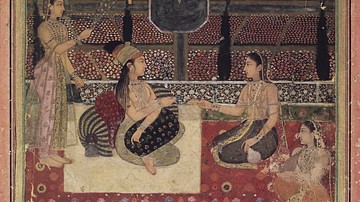
Definition
Urdubegis
The urdubegis were a group of female warriors in the Mughal Empire, who protected the zenana, the harem of the emperor. Although the origins of female bodyguards go back to the beginning of Indian civilizations, the urdubegis were a Mughal...

Image
Akbar in the Ibadat Khana
Mughal emperor Akbar is seen holding a religious assembly in the Ibadat Khana (House of Worship). Two Jesuit missionaries in black robes are identified as Rudolfo Acquaviva and Francisco Henriques. Illustration to the Akbarnama, miniature...
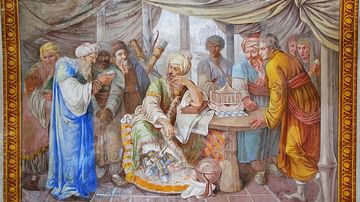
Image
The Court of Akbar
The court of Mughal Emperor Akbar (r. 1556–1605 CE). The man in the yellow robe is identified as Rodolfo Acquaviva.
Painting by an unknown artist, 1847 CE.

Article
Mandu - City of Joy
The city of Mandu is situated about 35 km from Dhar in the Madhya Pradesh region of northern-central India. Most of the city's monuments date to the 15th and 16th century CE. The city is located on a hill which rises 633 m above the sea level...
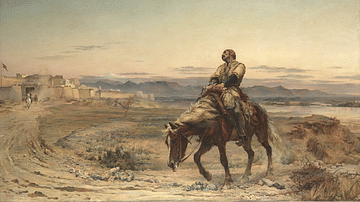
Article
Retreat from Kabul in 1842
The Retreat from Kabul in 1842 was one of the most notorious disasters in the history of the British Empire. An East India Company army had invaded Afghanistan but was obliged to withdraw. This army of 4,500 soldiers and 12,000 camp followers...
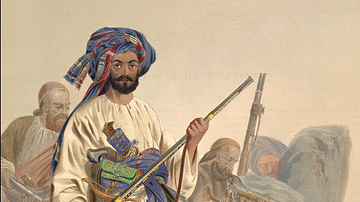
Definition
First Anglo-Afghan War
The First Anglo-Afghan War (1838-42) was fought between the British East India Company (EIC) and, the Emirate of Afghanistan, the ultimate victor. The British were keen to control Afghanistan as they feared Russian expansion into South Asia...
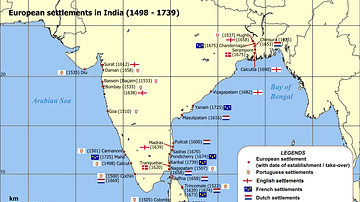
Article
The English and Dutch East India Companies' Invasions of India
In the early 17th century, the Dutch and English East India Companies turned their eyes towards India, as part of their grand schemes to develop extensive trade networks across the Indian and China Seas. They were faced with two significant...
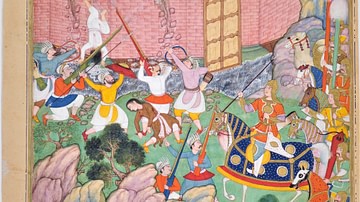
Image
Painting of the Siege of Baghdad
This painting comes from an illuminated manuscript of "The History of Genghis Khan". The illustration depicts the Siege of Baghdad (1258 CE) by Hulegu Khan (1218 - 1265 CE), the grandson of Genghis Khan (c. 1162/67-1227 CE). The illumination...